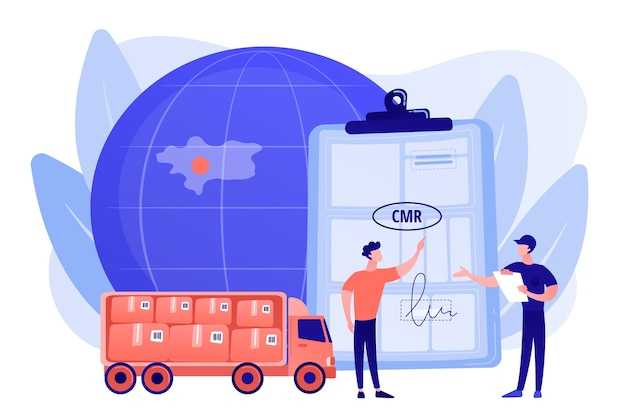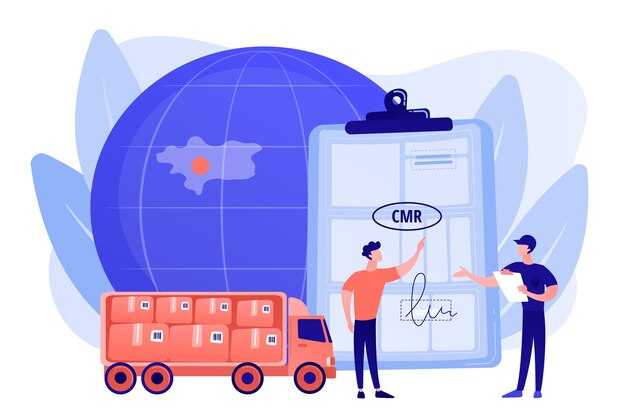Getting started as a carrier on a freight marketplace unlocks a scalable channel to find reliable szállítók, quote accurate rates, and manage shipments from a single dashboard. This introduction outlines the step-by-step registration process, the documents and verifications required, and the practical outcomes you can expect from a compliant carrier profile.
Prerequisites for registration include being a legally registered transportation company or sole proprietor, having active insurance, and valid operating authority. Prepare company details, Tax Identification Number, insurance certificates, motor carrier numbers, and bank information for payments before you begin the signup.
Registration flow typically involves creating an account, providing accurate company data, uploading required documents, selecting insurance coverage levels, linking a bank account, and agreeing to platform terms. The marketplace verifies your data, conducts identity checks, and assesses safety records before approving your profile.
Documentation specifics include proof of insurance with cargo and liability coverage, motor carrier authority numbers or operating authority, company registration documents, a validated Tax Identification Number, and fleet details such as vehicle and trailer counts and equipment capabilities. These items ensure compliance and speed up the approval process.
What happens after submission is a verification window during which the marketplace validates identity and compliance data. Once approved, you gain access to live loads, a trust-building rating system, and tools for rate negotiation, load tracking, and invoicing. Maintain a high compliance score by updating documents before expiration and keeping equipment and insurance current.
Create your account and complete KYC with required business documents
Sign up on the platform by selecting Carrier during registration. Enter your official company email, create a strong password, and specify your country of operation. Provide your legal entity name as registered, the trading or doing-business-as name if different, and select the entity type (sole proprietor, partnership, LLC, corporation). Add a primary contact person, their email, and phone number. Agree to terms and proceed.
Verify contact details. A verification code is sent to the provided email and another via SMS or authenticator app to the phone. Enter the codes to activate the account and enable two-factor authentication for added security.
Build the business profile. Input the legal name exactly as on official documents, any trade name, the country of registration, and the entity type. Enter the tax identifier (for example EIN in the US, VAT number in the EU, or national tax ID) and the official business registration number. Include the date of incorporation and the jurisdiction. Specify operating regions and the scope of freight services.
Submit KYC documents. Upload documents proving corporate identity and legal authority to operate. Typical requirements include the Certificate of Incorporation or Articles of Organization, a current corporate registry extract if available, and proof of business address. Upload the tax registration document (EIN, VAT, or equivalent) and any tax clearance certificates. Provide a list of beneficial owners who hold a specified percentage of equity and upload government-issued IDs for each owner. Append proof of address for the company (recent utility bill, lease agreement, or bank statement).
Provide authority and insurance evidence. For carriers operating in the US, attach your USDOT number and MC number along with the current FMCSA authority status. For other regions, attach the national operator’s license or equivalent. Upload a COI showing motor carrier liability and cargo insurance with limits that meet the platform’s requirements, and include any applicable general liability coverage. Ensure coverage dates are current and match the entity’s registration period. Include a separate certificate if required for garage or physical damage insurance.
Attach banking and payout information. Submit a bank statement or a voided check showing the bank name, account number, and routing number, with the account name matching the legal entity. Some platforms may request a short bank reference or payment history.
Document quality and submission tips. Provide high-quality scans or photos with legible text. Upload all pages; avoid cropped or edited images. Use accepted formats (PDF, JPG, PNG) and ensure each file remains within size limits. Ensure names on documents align with the company name and reflect the same entity across all uploads.
Review and verification timeline. After submission, the KYC review typically completes within 1–3 business days, depending on region and document clarity. You will see status updates in the dashboard and receive notifications by email or in-app messages. If additional data is required, you will be prompted to supply it.
Security and best practices. Enable two-factor authentication and store sensitive documents securely. Do not share login credentials or COIs with third parties. Confirm you are on the official platform URL before uploading documents. Periodically review permissions and update 2FA methods.
Common issues and remediation. Missing pages, outdated licenses, names that do not match the legal entity, or inconsistent addresses can delay approval. Ensure all owners and beneficial owners are disclosed as required, and re-submit a complete set of documents with corrected details. After resubmission, monitor the dashboard for status changes and ensure timely responses.
Result and next steps. Upon successful KYC, your carrier account becomes Active or Confirmed. You can complete fleet setup by adding vehicles and attaching insurance details, and you gain access to load boards, rating features, and carrier tools. Keep documents up to date and undergo periodic verifications as required by the marketplace.
Build and verify your carrier profile: add equipment, service areas, and rates
Start by collecting your official business information, regulatory numbers, and current insurance details. Prepare your USDOT and MC numbers, insurance certificate with policy dates and limits, legal business name, tax information if required, and a primary contact for operations and billing.
In the equipment catalog, add each equipment type you operate. For every item specify the equipment category (Dry Van, Reefer, Flatbed, etc.), fleet size, axle count, capacity, typical trailer length, and any restrictions such as temperature ranges or hazardous material limitations. Attach clear photos or diagrams of your equipment if the platform supports uploads, and note compatibility with features like liftgates or pallet jacks where relevant.
Define geographic coverage with precise service areas. Enter your base location and the radius you can reliably serve, or enumerate lanes between hubs, cities, and states. Include zip codes or metro areas where you routinely pick up or deliver, and indicate any blackout dates or peak periods. Ensure service areas align with equipment availability and driver capacity.
Configure your pricing structure with clarity. Set base rates per mile or per lane, linehaul charges, and any minimums. Add common accessorials such as detention, loading/unloading, lumper fees, fuel surcharges, and waiting time. Specify currency, rate validity windows, and whether rates vary by equipment type or lane. Provide a transparent rate breakdown visible to shippers.
Prepare verification documents: proof of insurance with carrier name, policy limits, and expiration date; government authority numbers (USDOT, MC); business license if required; and a current W‑9 or appropriate tax form as requested. Ensure the business address on documents matches your profile and that scans are legible.
Submit the profile for marketplace verification. Automated checks assess authority, insurance, and basic profile completeness; a verification team may perform manual checks for legitimacy and accuracy. You will receive notifications indicating approval, pending items, or disapproval with specific gaps to address.
If a document is rejected, update the indicated item (for example, expired insurance, mismatched name, or incorrect authority number) and resubmit promptly. Maintain current contact details so the verification team can reach you with questions, and refrain from publishing your profile until all verifications are green.
Regularly audit and refresh your profile. Update equipment additions or removals, adjust service areas for seasonal capacity, and revise rates as market conditions change. Re-verify documents when renewals occur, and set reminders to keep critical items up to date.
Adopt best practices to improve shipper confidence and match quality: provide detailed, consistent equipment and lane information; include high‑quality photos of your trailers; define service standards (pickup/delivery windows) and any guarantees; use uniform naming conventions to prevent search mismatches; and present a clear, logical rate breakdown to reduce back-and-forth negotiations.
Submit insurance, regulatory permits, and payment details to finalize activation

Provide a current Certificate of Insurance (COI) for General Liability, Cargo, and any other required coverages. Each COI must show the insured legal entity name exactly as registered, policy numbers, insurer name, and the policy period. Include endorsements naming the marketplace as additional insured and the certificate holder. Coverage amounts should meet platform minimums; commonly required are General Liability around $1,000,000 per occurrence with an aggregate, and Cargo insurance in the $100,000–$250,000 range; auto liability may be required if you operate company-owned trucks. The COI must be valid during activation and cover the entire term of the marketplace relationship.
Upload these documents in the specified portal section and ensure readability and legibility. Use PDF or clearly legible image formats; document names should reflect the insured entity and coverage type. The insured name must match your legal business name or the operating entity shown in your profile. If your insurer issues COIs through an agent, ensure the COI reflects the insurer’s letterhead and includes the marketplace as additional insured and the exact certificate holder name provided by the platform.
Regulatory permits and registrations: Provide your operating authority details, such as the DOT number and MC (Motor Carrier) number for US operations, or equivalent national/regional authority numbers in your country. Attach copies of registration letters, authority letters, and any safety fitness or compliance certificates required by your jurisdiction. If your operations cross borders, include applicable permits and registrations and any hazardous materials endorsements if you handle such cargo. Where applicable, add the process agent information (for example, a BOC-3 in the United States) or other service-of-process documents as proof of regulatory standing.
Payment details: Submit a valid payment method to cover activation fees and ongoing platform charges. Acceptable methods typically include credit/debit cards, ACH bank transfers, or wire payments as configured by the marketplace. Provide a billing contact name, email, and the payment method reference (for example, the last four digits of a card or a bank transaction ID) to tie charges to your account. Ensure the funding source and entity name match the registered carrier profile, and confirm authorization for the requested amount to avoid activation delays.
Verification and activation timeline: After submission, the compliance team reviews documents for accuracy, validity, and alignment with platform requirements. Expect a 1–3 business day review window; incomplete or inconsistent submissions will require resubmission. Activation is completed once all documents are verified and the initial payment is confirmed. You will receive a notification with next steps and any outstanding items if applicable.

 Step by Step Carrier Registration on a Freight Marketplace">
Step by Step Carrier Registration on a Freight Marketplace">
